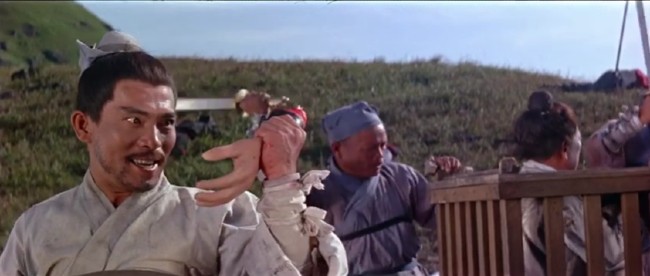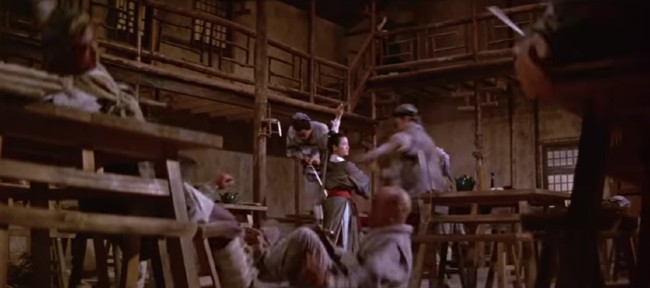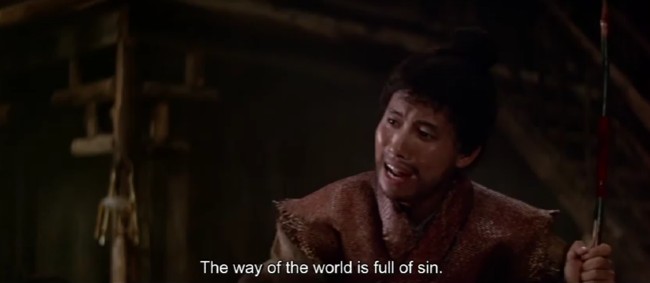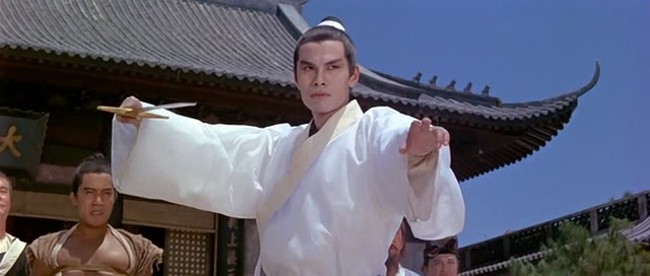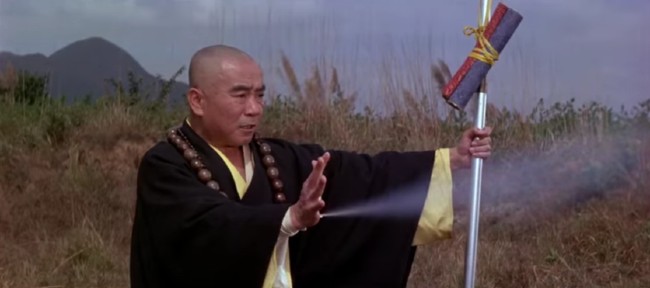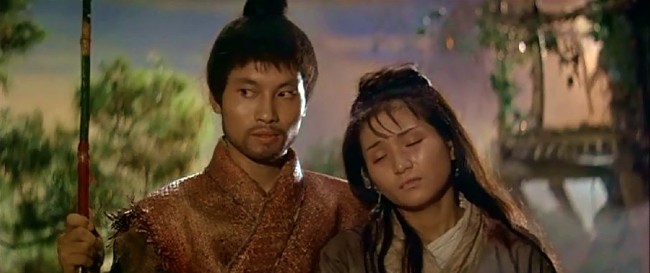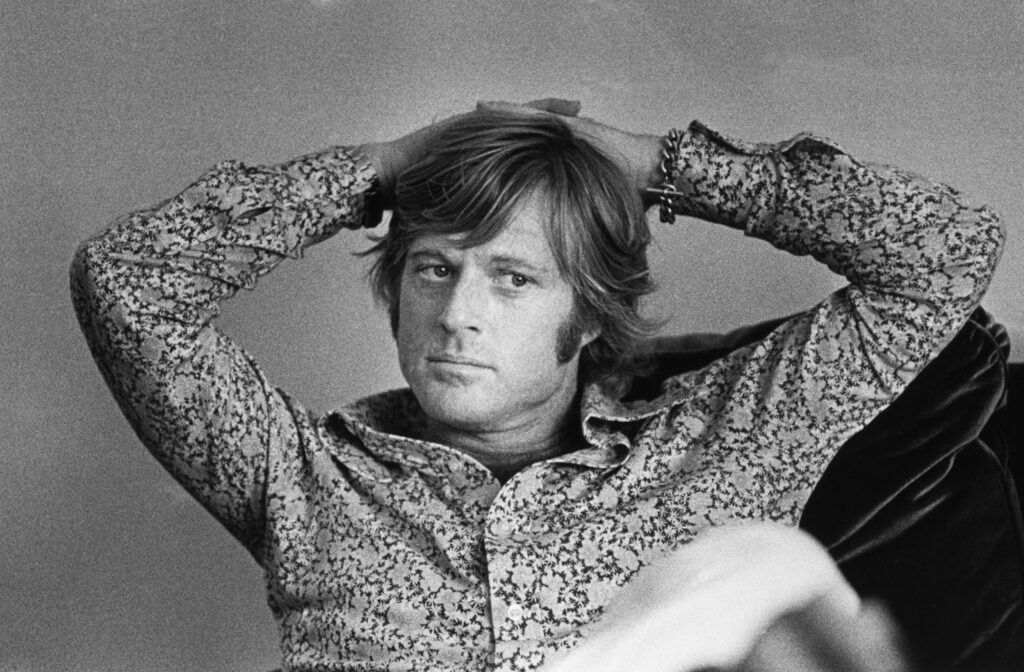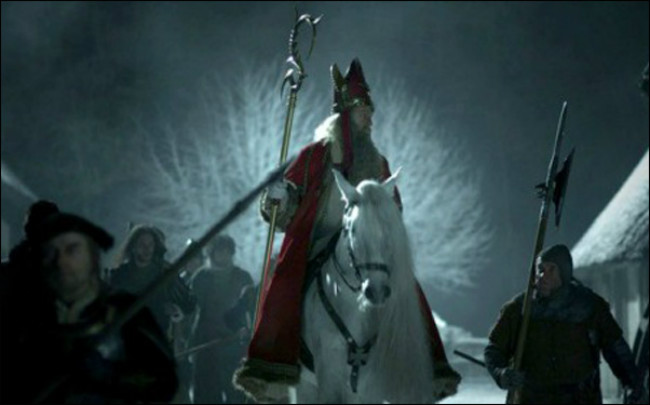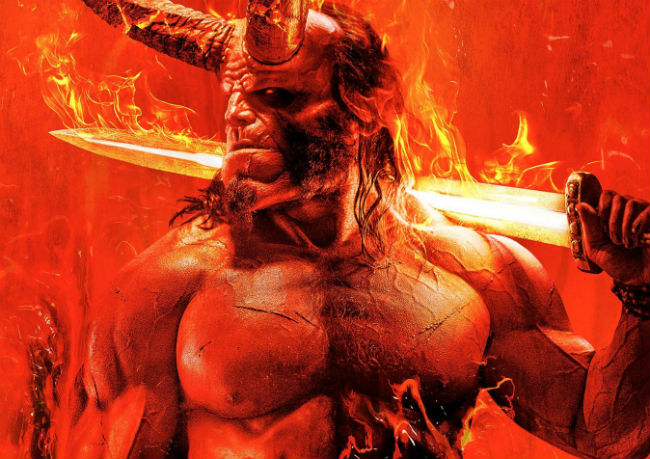In Review: Marital Arts Madness in Arrow Video’s Come Drink With Me

For most of the movie going public martial arts* movies begin with Bruce Lee and end with either Jackie Chan or Jet Li. For others, martial arts is something that occurs in a movie they are seeing, it’s not something that drove them to see the movie. Audiences didn’t go see The Avengers because there were some high flying kicks in it, they went to see The Avengers and there happened to be high flying kicks in the movie.
There’s nothing wrong if your martial arts movie knowledge begins and ends with either Bruce Lee, Jackie Chan, or Jet Li. The three of them combined have made some incredible movies. It’s not even a bad thing if you’ve only seen the few of their movies that have broken through to American audiences or the movies they made specifically for the American market. However, there’s a whole world of martial arts cinema out there waiting to be discovered.
If you are looking to expand your martial arts movie knowledge there’s no better place to start with than with the legendary Shaw Brothers. The Shaw Brothers released some of the first and now classic martial arts movies out of their studio in Hong Kong. Although the studio’s heyday is long past their legacy lives on. In December 2021, Arrow Video released a mammoth eight disc collector’s edition of some of their more iconic movies.
COME DRINK WITH ME
This month Arrow Video is releasing another classic Shaw Brothers movie and it is a delight of a movie. Come Drink With Me (1966) starts off with a bang. The Governor’s son is kidnapped by a group of bandits called The Five Deadly Tigers who hope to exchange him for their leader, affectionately known as Number One. The Five Deadly Tigers’ group of bandits quickly dispatch the army protecting Master Zhang. It’s a bloody mess utilizing some great camera angles and fake limbs being cut off.
In the aftermath, the Governor dispatches the mysterious Golden Swallow. When we first meet the Golden Swallow (Pei-Pei Cheng) walking into a tavern she’s dressed as a man. It’s obvious to the audience the Golden Swallow is a woman, but to the bandits looking her over she’s a man. It’s the first time we see the dreaded Golden Swallow’s martial arts skills in action. Come Drink With Me was released decades before the wire work we know today was even a thing. Using long shots and, again, crazy edits it appears as if there is some wire work going on in the fight scene, but there’s not a single wire working in the bar fight.
HIGH FLYING KICKS
These fast edits are used throughout the movie to mask the limitations of what could be realistically done. When the Golden Swallow walks up a wall in a fight scene with the Five Deadly Tigers she’s not actually walking up a wall. She’s walking on a wall laying on the ground with the camera at foot level. It’s basically the same trick used to make it appear Batman and Robin were climbing up walls in the television series. Interestingly enough, the television series and the movie were released in the same year.
One of the characteristics of a wuxia martial art movie, which Come Drink With Me falls under, is the inclusion of a magical or mystical type hero. Introduced into the movie as a homeless drunk the mystical hero goes by the name of Drunken Cat. Later, he’s called the Drunken Hero and then Fan Dabei, the brother of the evil abbot who’s the head of the local temple.
Drunken Cat knows a lot more about the Golden Swallow’s brother and where he is being held captive. He’s not willing to speak the words to her. Instead, he drops clues to her through song. If you’ve never seen a song and dance number in a martial arts movie now is the time to see not just one out but a couple of song and dance numbers.
When the Golden Swallow finally picks up on the clues she heads to the temple where the bandits are holding her brother. Here she finally meets the Jade-Faced Tiger, the number two of the organization. He’s so evil he kills a novice monk just for eavesdropping in on one of his conversations. The movie doesn’t hold back on the violence. First, Jade-Faced Tiger shoots a dart into the boy’s eyeball. When the boy is screaming in pain he has one of his goons puts a sword into the boy. The fatal blow is delivered off screen, but the arterial spray can be seen by all. There’s a lot of arterial spray in Come Drink With Me.
Drunken Cat, Drunken Hero
There’s more to Drunken Cat than being a song and dance man. Drunken Cat is also the brother of the head abbot of the local temple,the same temple where the Five Deadly Tigers are hiding Golden Swallow’s brother. It’s at this point where the fates of Drunken Cat and Golden Swallow converge.
Drunken Cat must face his brother to avenge their master’s death. Drunken Cat wants justice, the abbot wants the sacred bamboo staff. It’s not as hokey as it sounds. The fight between the two is when we get to see the elemental martial arts in practice. Elements may be stretching it a bit. Basically, it’s wind shot from something off screen and tubes hidden in robes, but the effect is still fun. The elements played a large part in a lot of older martial arts movies, specifically the ones with “elements” in the title or in the movie.
Regardless of the special effects, the final showdown between the brothers is the fight between good and evil. The fight starts in a natural setting, a field in a forest, and ends at Drunken Cat’s secret hideaway which was obviously a built set somewhere on Shaw Brothers Studio. Obvious maybe, but the quality gives the movie an other worldly feel. It’s also reminiscent of some of the built nature scenes for old Hollywood Westerns. It’s an appropriate place for the evil abbot to be skewered.
As fun as Come Drink With Me is to watch and as cool as the ballet like fight choreography is through out, the movie ends on somewhat of a flat note. Before the evil abbot is killed, the Golden Swallow has her final showdown with the Five Deadly Tigers. All signs were pointing to the final showdown being between the Golden Swallow and the Jade-Faced Tiger, but it doesn’t happen that way. The Golden Swallow had difficulty fighting the evil bandits through out the movie. At one point Drunken Cat nursed back from the dead. In the final fight she stabs one in the back and kills the other two at the same time. However, Jade-Faced Tiger manages to escape.
The end of the movie leaves the audience wanting for more which it ultimately does not get. Yet you shouldn’t let this deter you from watching Come Drink With Me. Come Drink With Me is a fast and frenzied actioner as you’ve eve seen. It doesn’t rely on the cheap gimmicks used today. The movie isn’t dependent on CGI to do the heavy lifting. Even more important, there’s not one shaky cam in the movie which means you can actually see the sword play and fight scenes. If Come Drink With Me doesn’t make you a fan of the martial arts movie nothing will.
(*there are several different types of movies under the marital arts label. For the sake of space and time we’ve just grouped them all as martial arts movies.)
High Flying Extras
Arrow Video always makes it a point to put quality extras on their releases. Come Drink With Me is no exception to the rule. First thing you notice is the outstanding cover art by Tony Stella. Stella’s art work feels like its been infused with a little Drew Struzan, the famous movie poster artist responsible for classics like Back to the Future, Raiders of the Lost Ark, and Blade Runner to mention just a few.
Several interviews are included on the disc. Cheng Pei-pei (Golden Swallow) and Yueh Hua (Drunken Cat) are the featured interviews. There’s a documentary on Shaw Brothers Studio called Cinema Hong Kong: Swordfighting. If you want to know more about the Shaw Brothers this documentary is a good place to start. Film historian Tony Rayns provides a wonderful commentary track. Over all, every penny you spend will be a penny well spent.


